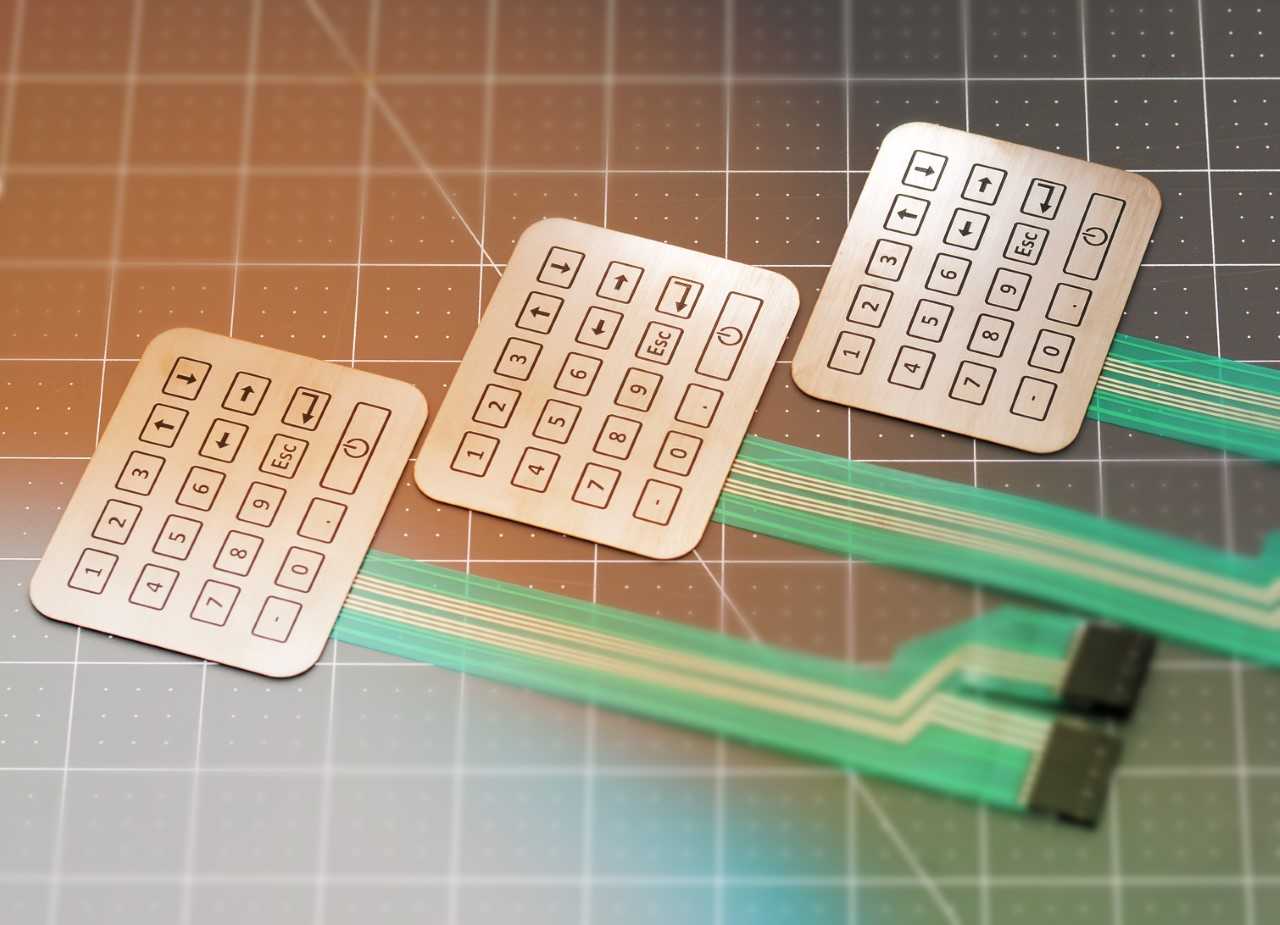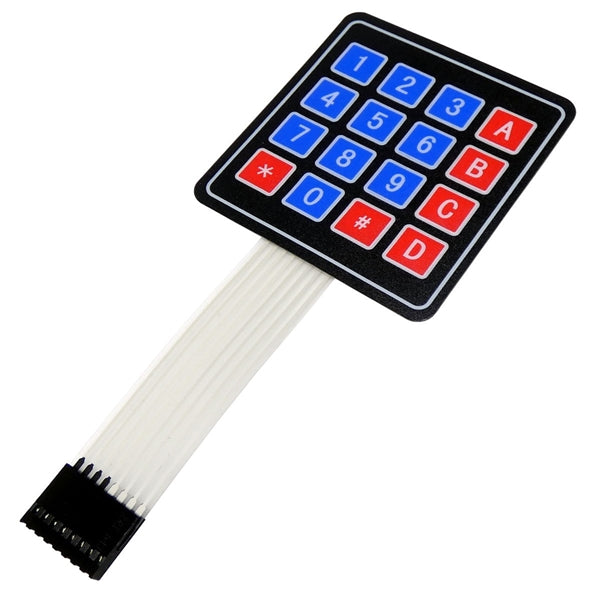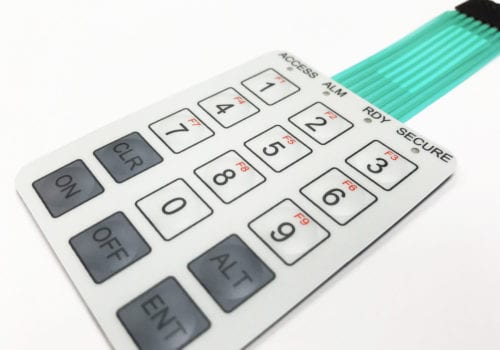What to Look for When Picking a Membrane Switch for Your Task
When you're selecting a membrane switch for your project, a number of vital variables come right into play. You'll require to think concerning the materials, design, and how well it aligns with your brand.
Understanding Membrane Switch Over Parts
When you dive right into the world of membrane layer switches, it's vital to comprehend the key components that make them function. The button normally contains three main layers: the graphic overlay, the spacer layer, and the circuit layer. The visuals overlay offers the visual interface, presenting switches and icons you need for simple navigating. Under that, the spacer layer warranties there's enough range between the circuit and the overlay, permitting the button to trigger without constant pressure.
The circuit layer, typically made from printed conductive inks, creates the electrical paths. When you press a button, the circuit closes, sending a signal to the gadget. Recognizing how these layers function together aids you choose a membrane layer switch that's dependable and fits your job needs. Pay very close attention to the density and product of each layer, as these factors influence resilience and functionality in various settings.
Product Option and Its Influence
Selecting the best materials for your membrane layer switch can considerably impact its performance and durability. The selection of substratum, generally polyester or polycarbonate, affects resilience and adaptability. Polyester is a lot more abrasion-resistant, while polycarbonate provides better clarity and toughness.
Following, take into consideration the adhesive. It needs to hold up against environmental elements like dampness and temperature changes. A strong adhesive assurances that your membrane layer button remains undamaged gradually.
Do not forget the visuals overlay. The printing method used, whether silkscreen or electronic, influences the switch's aesthetics and durability. Top quality inks will withstand fading and scratching, maintaining a specialist appearance.
Last but not least, think of environmental problems. If your tool will certainly be exposed to severe chemicals or extreme temperature levels, choose products created to endure these obstacles. Your options in products will eventually establish the button's dependability and user satisfaction.
Design Considerations for User Experience
Choosing the best products lays the structure for an effective membrane switch, but the layout also plays a significant function in individual experience. You'll wish to assess just how the format influences functionality (membrane switch manufacturer). Keep buttons and icons user-friendly and well-spaced, making it easy for customers to navigate without complication

Shade and comparison are also essential; guarantee that your style is aesthetically appealing but still practical. High comparison helps users conveniently recognize buttons, especially in low-light conditions.
Lastly, reflect on the overall aesthetic. A smooth and modern-day style can raise individual understanding and make your item extra appealing. Stabilizing capability with an interesting style will bring about a better user experience and inevitably, a much more successful product.

Ecological Aspects and Longevity
When selecting a membrane layer switch, you require to think about exactly how it'll execute in different settings. Variables like temperature level resistance, dampness and chemical direct exposure, and mechanical wear can considerably affect its longevity. Understanding these components will help you pick a switch that takes on your particular conditions.
Temperature Resistance Demands
As environmental conditions can vary widely, understanding temperature level resistance is crucial for ensuring the resilience of your membrane layer switch. Make certain to check the specs of the products utilized in the switch, like the glue and overlay, as they straight impact efficiency. By picking a membrane switch with ample temperature resistance, you'll improve its life-span and preserve capability in difficult environments.

Wetness and Chemical Direct Exposure
Dampness and chemical exposure can greatly influence the performance and long life of your membrane layer button, so it's vital to comprehend the setting in which it will be used. If your task involves high humidity or exposure to fluids, try to find safety finishings and sealants that can enhance resistance to wetness. In addition, take into consideration the kinds of chemicals your switch might come across. Specific materials can deteriorate when exposed to solvents, oils, or severe cleaners. Picking the right materials, like polycarbonate or polyester, can assist stand up to these aspects. Always get in touch with the producer's requirements for chemical compatibility to ensure your membrane button keeps its functionality over time. By prioritizing dampness and chemical resistance, you can improve click here for more the longevity of your button in difficult environments.
Mechanical Damage
While you might prioritize attributes like looks and performance in your membrane button, mechanical wear and tear can considerably influence its efficiency over time. Frequent pressing can lead to deterioration of materials, triggering problems like responsive comments loss or also switch failing. Choosing a durable switch guarantees longevity and dependability, protecting against expensive replacements and downtime in your project.
Personalization Options for Branding
When it comes to branding your membrane layer switch, modification choices are vital. You can pick layout elements and colors that reflect your brand name, along with certain logo design placement and size to boost presence. Furthermore, selecting the best products and appearances can boost the total look, making your item attract attention.
Design Components and Shades
A vast array of style elements and shades can make your membrane layer switch not just functional however additionally visually attractive, improving your brand identification. Don't neglect concerning appearances; adding a responsive element can enhance user experience and make your button stand out. By attentively picking design elements and shades, you not just produce an item that looks excellent yet also reinforces your branding continually and properly.
Logo Design Placement and Dimension
After finalizing your style elements and shades, the next action is to focus on logo design positioning and size. Your logo design is a crucial element of your branding, so you'll desire it to stick out without overwhelming other layout aspects. Show on where your logo design will certainly be most visible and impactful; usual placements include the leading or facility of the button.
Do not neglect to ponder just how the logo design straightens with customer communication. This attention to detail will improve both performance and brand name identification in your job.
Product and Appearance Alternatives
Selecting the best materials and structures for your membrane switch can substantially boost both its capability and visual charm. You'll intend to assess options like polyester or polycarbonate, as they use longevity and resistance to put on. The appearance of the surface area additionally plays a vital function; smooth finishes give a streamlined appearance, while distinctive surface areas can enhance hold and find this responsive responses.
Customizing the materials and structures enables you to show your brand identity properly. For example, you might select a matte surface to share refinement or a shiny try to find a contemporary touch - membrane switch manufacturer. Don't forget color choices, as dynamic shades can make your button stick out, while muted tones can develop a much more stylish appearance
Cost vs. Quality: Discovering the Right Equilibrium
When you're handling the options for membrane layer buttons, balancing expense and top quality can really feel overwhelming. A lower-cost button might conserve you money upfront, however if it endangers functionality, you might deal with greater substitute costs later on.
Look for producers that supply a great mix of price and high criteria. Research their credibility and consumer reviews to evaluate dependability. Sometimes, spending a bit more in high quality products can save you from future headaches.
Likewise, think about the long-lasting efficiency and service warranty choices. A slightly much more costly switch with a strong guarantee could prove to be a smarter investment. Eventually, it has to do with discovering that sweet place where you meet your budget plan while guaranteeing your project's success.
Examining and Top Quality Assurance Protocols
While you might find the ideal membrane button design, assuring its quality through extensive screening protocols is crucial for long-term success. Start by verifying that the supplier adheres to industry requirements, such as IPC/WHMA-A -620, to ensure a reliable item. membrane switch manufacturer. You'll desire to check for extensive screening approaches, including ecological, mechanical, and electrical analyses
Make certain the switches go through durability testing, imitating real-world use to determine any possible failings. Take notice of the manufacturer's top quality guarantee procedure, which ought to include regular assessments and audits.

Don't forget to ask for samples and conduct your own examinations to verify compatibility with your project. Take into consideration how usually the maker updates their methods; technology in testing can lead to improved quality. By focusing on these screening and high quality assurance procedures, you'll raise the chance of an effective and long lasting membrane switch for your application.
Frequently Asked Inquiries
Just how Long Does a Membrane Switch Generally Last?
A membrane button usually lasts anywhere from 1 to 10 million cycles, depending upon usage and ecological variables. You'll intend to take into consideration your specific requirements to ensure it meets your long life needs effectively.
Can Membrane Layer Changes Be Repaired if Harmed?
Yes, you can occasionally repair membrane buttons if they're harmed, yet it often depends upon the degree of the damages. Small problems may be reparable, while more substantial damage typically needs replacement for appropriate functionality.
What Are the Usual Applications for Membrane Buttons?
Membrane switches are generally utilized in devices, medical tools, and auto controls. You'll discover them in consumer electronics, industrial devices, and also video gaming consoles. Their versatility makes them optimal for various customer interfaces and environments.
Exist Specific Qualifications for Membrane Buttons?
Yes, there specify accreditations for membrane buttons. Look for UL, CE, and RoHS accreditations to guarantee safety and conformity. These certifications suggest the switch satisfies market criteria for high quality and environmental safety.
Just how Do I Make Certain Proper Setup of a Membrane Layer Switch?
To guarantee appropriate setup of a membrane switch, clean the surface area extensively, align it very carefully, and apply also stress. Comply with maker guidelines for glue curing time to make the most of resilience and performance.
Verdict
When picking a membrane layer switch for your task, keep these you could try these out essential consider mind: focus on long lasting materials, emphasis on straightforward design, and take into consideration customization for your brand name. Equilibrium price and high quality by looking into trusted producers with strong quality control methods. By very carefully evaluating these facets, you'll assure your membrane switch not only fulfills your job requires however additionally improves customer experience and shows your brand name identification properly. Make an enlightened selection, and your task will prosper!